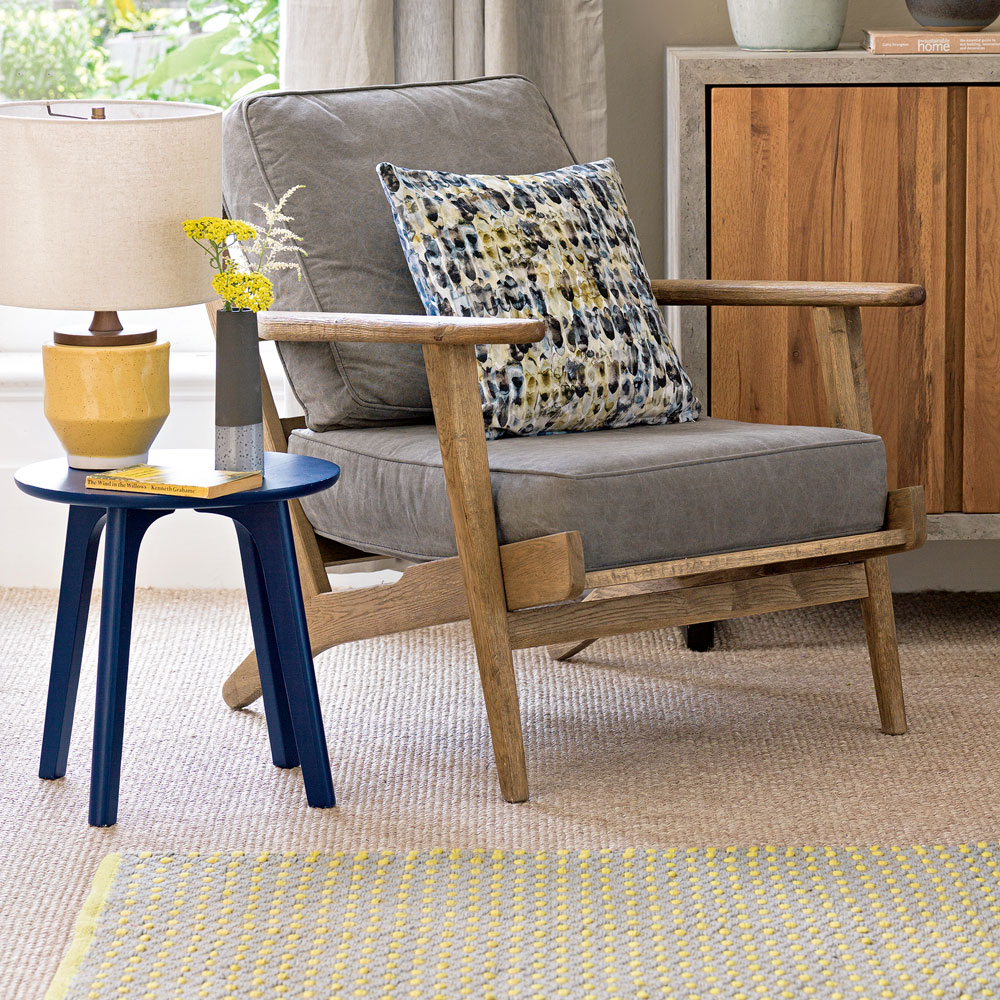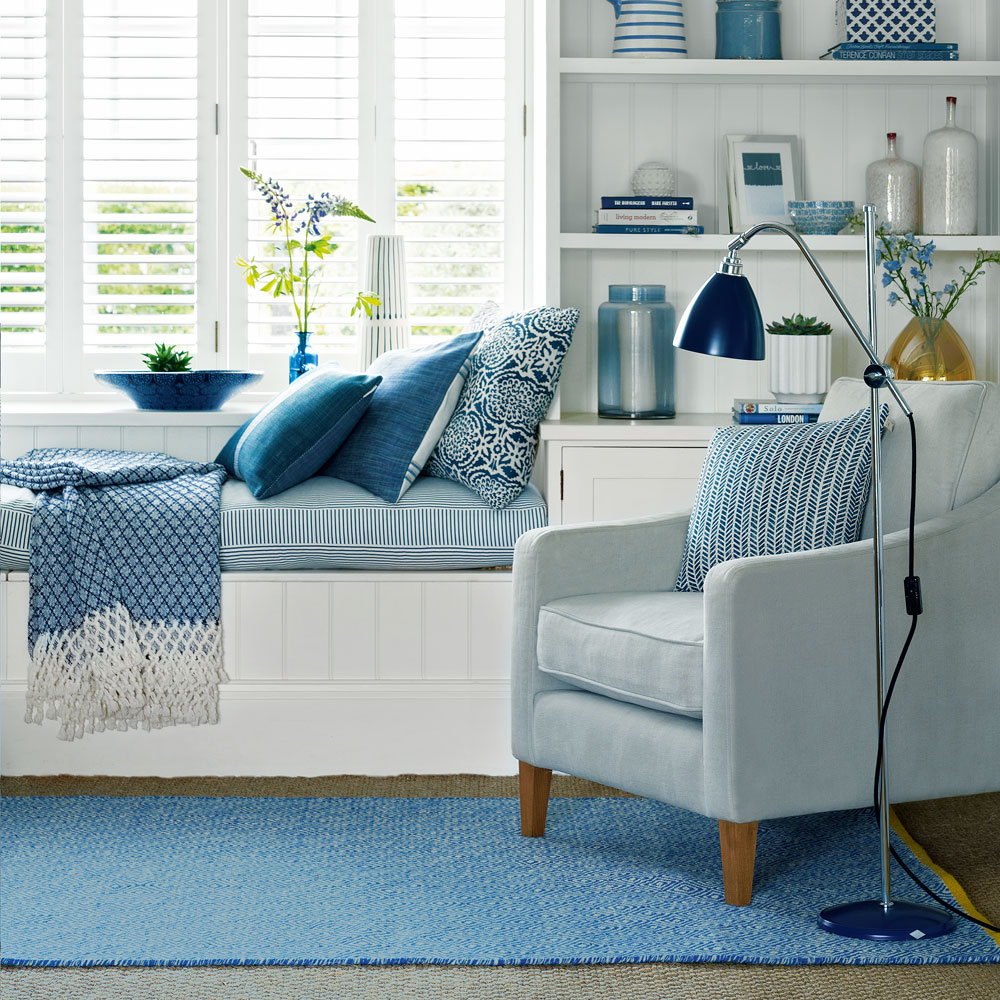Can you have underfloor heating with carpet? We explain all you need to know
Discover whether this soft and comforting flooring solution works with underfloor heating

There's nothing quite like a warm floor on a chilly morning, but to amplify the cosy factor you may be considering having underfloor heating with carpet. However, you may have been told in the past that they rule one another out.
While it is safe to say that while a plush, piled surface might not transfer the warmth from your system as effectively as a smooth, tiled or wooden surface would. It doesn’t mean you need to rule underfloor heating with carpet out as an option.
Can you have underfloor heating with carpet?

Carpet works with both water and electric underfloor heating (UFH). It’s useful to consider how underfloor heating distributes heat when compared to a more conventional system, like radiators.
'The latter causes air circulation throughout the room, moving dust and impurities around. Carpets often absorb dust,' says Sarah Wazir, a marketing executive at Warmup. 'UFH heats up objects rather than the air and doesn’t create that same circulating effect. The radiant warmth delivered by UFH, therefore, is a good match for carpeted surfaces.'
What to consider when choosing underfloor heating with carpet
If the luxury of a warm-to-the-touch, carpeted floor tempts, there are a few fundamental factors to bear in mind. Here, we explain what you need to know.
1. Carpet backing
Lightweight materials like jute and hessian allow warmth from the UFH system to transfer through the surface of the carpet without any issues. 'Rubber backings on carpets are likely to absorb the heat and create problems with heat transfer,' says Jon Flannigan, product manager at Kersaint Cobb. A felt backing may also impede the performance of your setup.
2. TOG rating
When pairing carpet with underfloor heating, the TOG value is one of the most important factors to consider. 'TOG rating stands for Thermal Overall Grade and measures the thermal insulation of a product,' says Scott Hosie, head of product & innovation at Crucial Trading.
Sign up to our newsletter for style inspiration, real homes, project and garden advice and shopping know-how
'A rule of thumb for flooring is no higher than 2.5 for a combined carpet and underlay to work efficiently with UFH. A carpet TOG rating of 1.5 would be good to aim towards.'
3. Water systems
A hydronic UFH system comprises a network of pipes laid beneath the surface of your floor. When turned on, warm water (around 30°C -35°C) is pumped through these conduits to warm the floor above.
This is a perfectly compatible underfloor heating with carpet, though it’s always wise to follow your manufacturer’s installation guidelines and pay close attention to the TOG value to ensure maximum efficiency.
4. Electric systems
Powered by your domestic electricity supply, electric underfloor heating comes in two main forms. The first comprises loose wires laid beneath the surface of your floor, the second is formed of cables that have been embedded into a mat. When either of these systems is switched on, the cables are heated by electricity.
'For installation beneath a carpet, the Warmup Foil Heater is a good fit,' says Sarah from Warmup. 'This setup is designed specifically for floating floors, laid across large, regular-shaped zones. The super slim, fully earthed layer of aluminium foil doesn’t increase the overall floor level so it’s ideal for retrofit scenarios.'
What carpets work best with underfloor heating?

We take a look at the materials that are best suited to underfloor heating with carpet. They will also impact your budget when you are adding up your underfloor heating costs.
1. Wool carpet
Sustainable, hard-wearing, and super-soft, this material is likely to be near the top of your carpet wish list. 'Natural fibres in wool carpet mean the UFH system may take a little longer to heat the room, however, the naturally insulating nature of the fabric also means it will retain heat for longer periods,' says Jon from Kersaint Cobb. Wool is naturally anti-static, too, so it will pick up less dust.
2. Synthetic carpet
Many wool blends, polypropylene and nylon carpets meet the requirements to work with underfloor heating – providing the combined TOG value of the carpet and underlay is not too great. Nylon offers good durability, as does polypropylene, which is resistant to staining.
However, it’s worth bearing in mind that carpets of this type are not specifically designed to hold on to heat. Therefore, if your budget can stretch to wool, that might be a more effective option in the long term. Plus, wool tends to offer a longer service life.
3. Natural floor coverings
Natural fibres like sisal, coir, seagrass and jute are all suitable with underfloor heating. They come with impressive sustainability credentials, too, and typically contain fewer chemicals than man-made solutions.
Before charging ahead with your installation, be sure to follow guidance from your carpet supplier and your UFH manufacturer.
Carpets to avoid with underfloor heating
When it comes to underfloor heating with carpet it's worth steering clear of any carpets with heavy or thick yarns. 'Underfloor heating needs to be able to radiate heat,' says Jon from Kersaint Cobb. 'So, beware that such a product may have a negative impact on how effective your UFH is.'
Tips for installing underfloor heating with carpet

- DO follow advice from your carpet retailer and your underfloor heating supplier – they will have all the information to hand to ensure a successful installation of underfloor heating with carpet.
- DO make sure that when your heating engineer carries out the heat loss calculations to design your UFH system, he or she knows which rooms carpet will be laid in. The floor covering will have an impact on the result of these calculations and the system you specify.
- DO make sure the subfloor (solid concrete, joisted wooden floors etc) is suitable for the type of UFH you have chosen, as well as for carpet.
- DO glue carpet gripping rods, available at Amazon, over the screed layer or self-levelling compound to make sure the subfloor doesn’t crack.
- DO take time to understand how efficient underfloor heating is and that it runs smoothly and effectively.
- DON’T skip the preparation of your subfloor before the UFH is laid. The surface should be cleaned, with cracks filled or imbalances levelled out before the system goes down.
- DON’T whack the heating up to full blast as soon as your carpet has been laid. The heating should, in fact, be switched off for two days prior to the carpet being fitted. Once installation is complete, the system can gradually be turned up to its full temperature over the course of one week.
Does the temperature setting matter?
Many manufacturers advise that certain floor finishes at the softer end of the scale – including carpet – shouldn’t be heated with UFH to temperatures higher than 27°C. If the heat output you require is more than that, based on the calculations from your heating engineer, it might be worth switching to a different type of floor covering.

Rebecca Foster started her journalism career in Bangkok in 2013, where she worked on the in-house editorial team at a luxury homes magazine. Since then, Rebecca has contributed to numerous property and interiors titles in the UK and Southeast Asia. She re-located to London in 2015 to work at one of the country’s leading self-build and home renovation magazines. In 2017, she left her job to split her time between freelance journalism and teaching yoga.